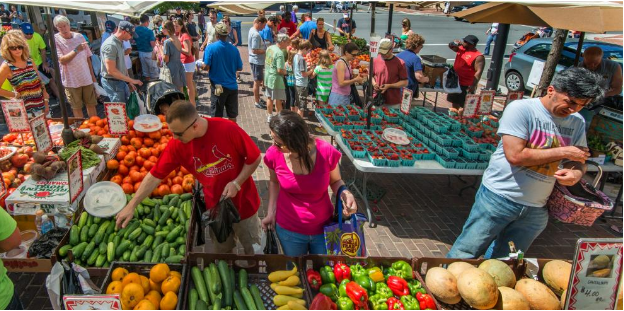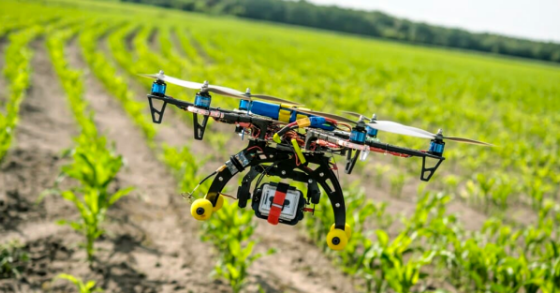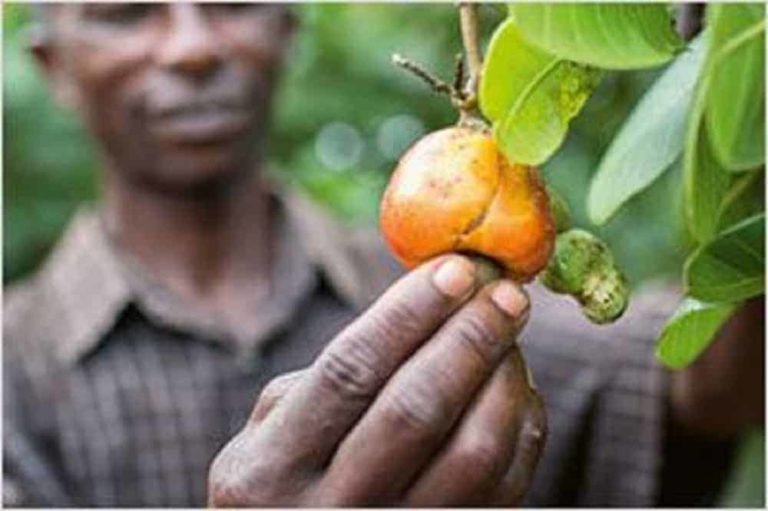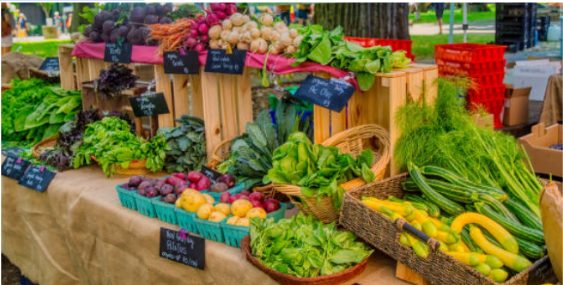Your cart is currently empty!
Food Shortages Upcoming And Food Supply Risk
A nation’s food supply is determined by composition and selection. The components of a food supply are limited by several factors, primarily climate and geography.
The U.S. food supply risk is noticeably different from other nations as the twenty-first century begins. Americans are more likely to recognize food products than the specific ingredients in supermarket shelves’ seemingly endless array of products. Some supermarkets stock over forty thousand items. In 2023, manufacturers started making their finished food products smaller while keeping the same price. Customers noticed it, but it was not linked to decreased sales.
Evolved Food Transportation Risk

McDonald’s, Taco Bell, or Subway fast-food outlets are more recognizable than a steer, hog, chicken, or wheat. Most slaughtered, processed, manufactured, and packaged foods are sold in bulk, as was common before World War II. Nearly all foods are shipped from distant places on pallets or in large containers. The complex transportation systems bring food to warehouse storage or freezer facilities. Trucking in from there to be unpacked and displayed on supermarket shelves or served in fast-food outlets.
The United States enjoys a temperate climate that is especially hospitable to agriculture and supports the production of various grains, fruits, nuts, and vegetables. As well as milk, meat, poultry, and fish. Americans export as much as 60% of some crops to other countries. Within the U.S. landmass, soil conditions and characteristics ensure an abundance of available farm acreage, which, in turn, assures a profuse supply of food, so much so that the U.S. Congress authorizes programs that pay landowners to keep portions of their farmland lying fallow. Named the Conservation Reserve Program.
Purchasing, storing, and maintaining food surpluses cost taxpayers more than paying farmers not to produce, making payments to idle farm acreage the cheaper alternative. Income also is a significant element in the composition of the food supply. The higher class can always get quality food. So, trucks and planes will keep moving food if the trains go down. Trains and planes will keep the upper class from experiencing food shortages if trucks go down.
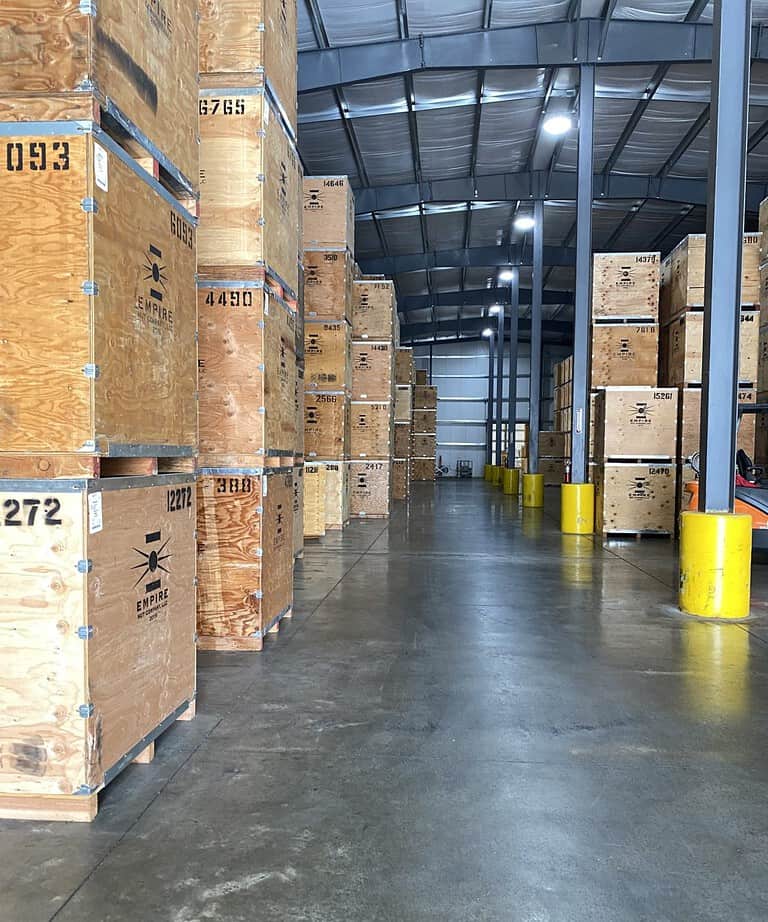
Composition Of The U.S. Food Supply
Americans are among the wealthiest populations in the world. Wealth creation enables most U.S. citizens to purchase goods from abroad. Food that is unavailable from U.S. agriculture or fisheries. The United States is a magnet for the world’s food supply due to excess ports and ships. There is an endless trade caravan of meats, pasta, spices and herbs, sauces, cheeses and other dairy products, wines and spirits, cakes and crackers, and fish and exotic fruits and vegetables. While income is a means of expanding the selection of foods available in an indigenous food supply, income is more often a limiting factor in food availability in a population or subgroups within a population.

The Standard American Diet
Low-income families and individuals in the United States have a limited food supply than those with middle or higher incomes. Specifically, these low-income shoppers have less access to quality ingredients. However, public policies today ease income barriers to an adequate food supply by supplementing the purchasing power of low-income families and individuals. These programs include food stamps, other government programs, and school meals for children. Food shortages will likely look like low-income households that can afford food with far less protein, more chemicals, and more sugar than higher-income families. Just $1,000 less annually per person, resulting in food consumption measurably lower nutritional value.
In contrast, populations in poor countries, also called less developed countries, are limited by income to the food supply. Trade in either conventional or exotic foods is not an option since many of the world’s poor live outside a conventional marketing system. As a result, most citizens of less developed countries grow or raise most of their food themselves. The imports from America are becoming increasingly important. In central Africa, for example, the food supply consists of locally produced staple foods such as maize, cassava, sweet potatoes, bananas, millet, sorghum, and yams. There is a lack of vitamins and minerals in these staple foods. Specifically, the loss of access to farm animals and seafood.
Learn The Sources Of The Current Food Supply
Cereals are any grass cultivated for its edible grain. It is composed of an endosperm, a germ, and a bran. Cereals, including wheat, rice, quinoa, and chia, provide 69 percent of dry matter and 55 percent of the protein in the world’s food supply by weight. Legumes (Beans) provide another 6 percent dry matter and 13 percent protein. Vegetables, fruit, meat and poultry, eggs, fish, nuts, sugar, and other sweeteners, in that descending order, provide the rest. People living in the United States and the countries in the European Union, as well as Canada, Japan, Australia, and New Zealand, consume a food supply with larger proportions of meat and poultry, dairy products, fruits and vegetables, fish, nuts, sugar, and oils and fat. A diet that delivers a substantially larger caloric load than that typically available in poor countries.
As personal incomes rise, the diet of individuals and nations shifts from basic food sources to those that provide a higher level of energy, or calories-animal products, more highly processed prepared foods, and oils and fat. Grains, especially maize, oats, millet, and sorghum, drop out of the human diet to become animal fodder as incomes rise, which are then categorized as feed grains. Replacing grass and hay (traditional animal fodder), feed grains are fed to cattle, hogs, and chickens instead, reentering the food supply as beef, pork, poultry, milk, and other dairy products. Fish farming, or aquaculture, has emerged as a commercial source of freshwater fish and seafood in the last decade and as a user of feed grain in rations fed to fish raised in underwater pens.
Religious Belief And Feeding The World
The food supply varies by nation and geographic region, reflecting religious beliefs and cultural practices. Devout Muslims and Jews do not eat pork. Koreans, Chinese, Vietnamese, and other citizens of Southeast Asian nations have many similar recipes that use the most pork ingredients worldwide. Americans increased spending on food outside the home by nearly 25 percent in the 1900’s. America became the center of the development of restaurants for the fast food chains now found worldwide. This means that a loss in the production of hogs for pork would not affect Saudi Arabia but would devastate China as a result of food shortages.
By the end of the twentieth century, the U.S. could not visualize the source of its food supply from an agricultural perspective, that is, in terms of basic food groups. The issue is that the majority of Americans no longer live on farms. Instead, food had become an endless array of wrapped products typically found on supermarket shelves. Especially those mega markets that stock over forty thousand individual items. Most foods sold in these stores are processed and packaged. Only a few are sold in bulk at stores like Costco, as was common sixty years ago. Nearly all were shipped from distant places, packaged in large containers, transported to huge warehouse storage facilities close to cities and metropolises, and trucked from there to be unpacked and displayed on supermarket shelves.
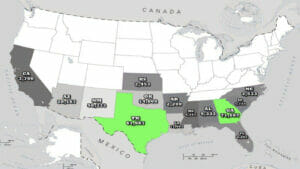
Current Transportation Of Food And Risk
Transporting the food supply long distances requires that foods arrive in a “safe” condition. Meaning they will cause no harm when eaten. Processing and packaging are essential to safely preserving food ingredients. The drying of fresh fruits and vegetables, fish, meat, and poultry, freezing them, or cooking and canning them. Then, it is transported to storage and markets around the country. They are usually transported by truck or train. As of October 2023, the Federal Railroad Association has recorded 742 incident reports for train derailments in 2023. Additionally, railroads reported 59 collisions, 12 fires, and 138 highway-rail-crossing. There have certainly been fewer derailments since the height in 1978. But, the crashes are getting larger and with more negative outcomes. Losing a train track or bridge might not lead to food shortages. But, the loss of two or three might.
Consumers were working more, earning more, and willing to pay more for convenience. They include appliances like the microwave, which made convenience foods more convenient. By the end of the twentieth century, only one in three U.S. consumers said their food budget was a primary consideration in food purchases. This is leaving an issue with logistics. Ingredients come from the middle of America to be processed on the American coasts and then sent to supermarkets. If more is being spent on processing and transportation, that leads to a fragile system.
The Immutable Economics of Food
Regardless of the marketing ingenuity of food processors and supermarkets or the culinary talent of restaurant chefs, the food system cannot escape the reality of the inflexible economics of food. The typical stomach can hold only a finite amount of food. An individual who has not eaten for twenty-four hours may be willing to pay twice the asking price for a tempting meal.
The need for food is constant. Starving people will pay almost anything, do anything, to get enough to eat. Survival depends on a minimum food intake, averaging between 1,800 to 2,400 calories per person daily, that will also ensure adequate levels, or stores, of essential oils, fats, vitamins, and minerals. Humans can survive on less food. A physical and physiological price is measured in stunted growth and susceptibility to chronic and infectious diseases. When food is scarce, prices will increase. The more scarce food becomes the more rapid the price escalation.
When food is plentiful, in contrast, people will not pay more to obtain greater amounts of food than they need. Farmers who harvest more food than can be easily sold will be paid a substantially lower price. Without excess production, they would receive more money for all the wheat, maize, rice, hogs, and cattle they sell in the market.
Farmer Production
When each farmer produces only slightly more one year than the last, the combined surplus can be so large as to devastate the income of all farmers. This condition plagued U.S. agriculture for much of the twentieth century, not withholding their surpluses since the amount was too small to make a difference. Still, each farmer suffers measurably when the surplus is so large that commodity prices fall and profits are destroyed. No individual, cooperative, or company has the resources to acquire and store the excess food.
Farmer Responses Are Limited In The Event Of Food Shortages
Farmers, food processors, and consumers cope differently with the inflexible fact of inelastic stomachs, with varying degrees of government intervention. When we look at the value of the food supply, the value of food only accounts for only 20 percent of the cost of the entire system. Food processors have the comparative advantage of size and few competitors. The 1990s brought consolidation to the industry with few competitors left. This change occurred rapidly at all levels of the U.S. food supply system. Thanks to the benign attitude of the federal government toward anti-competitive behavior, a marketplace with enormous advantages for the survivors was created.
The Massive Size Of Food Processors
Four companies control beef and pork processing, and three dominate the poultry industry. Even these seven firms are exploring further consolidation, allowing processors to largely control what they will pay producers.
Although commodity prices in the United States are low by all historical standards, the cost of food is not as significant a factor for company management as stability of supply and the ability to either stabilize (fix) the cost or negotiate the price of ingredients. Processors with few competitors need to fix the cost of ingredients over the life of the marketing plan for a food product. Those costs will be only one factor to consider in setting the level of product prices in developing marketing strategies that will produce a profit. With price competition virtually eliminated for grocery food items, the price obtained through product differentiation is the dominant management concern.
Good Food Is Getting More Expensive
From the consumer’s perspective, food costs are declining due to rising household income, and food price inflation is largely absent. Both conditions are substantially influenced by government fiscal and monetary policy. As long as these conditions prevail, consumers are less likely to be upset about the growing market power of food processors than they would be if food price inflation were escalating as much as it did in the 1970s. As odd as it sounds, inflation is not a food supply issue today because of convenience. Food processors and supermarkets would inflate food prices if they could, but restaurants and fast-food outlets would take a bigger share of food spending if they did.
Consolidation In The Food Processing Industry
Consumers will choose to eat out more. The food industry is held in a tight grip by the competition over market share from restaurants and fast-food outlets. Processors and supermarkets have yet to develop an effective counter-strategy to the convenience competition and cannot raise prices as much as they would like. With the consumer food dollar almost evenly split between eating out and eating at home, the food processor gets a small piece of the pie. Consolidation in the processing industry is an inevitable response, dividing the consumer dollar among fewer participants.
Another factor limiting the supermarket industry’s ability to raise food prices is a recent invasion of competitors, especially from “big box” discount retailers. Both Wal-Mart and Target are rapidly adding grocery merchandising sections to their existing stores. New stores are being built emphasizing groceries and food.
As a result, supermarkets are being pressured by restaurants and fast-food outlets and competition from discount stores. Supermarkets are taking the pragmatic approach, “if you can’t beat them, join them,” by marketing whole meals prepared in the store. While seven of every ten take-out meals sold in 2023 came from fast-food outlets. Supermarkets accounted for almost two of ten, leaving the remaining one percent of the take-out market to restaurants. As long as consumers have the disposition and the disposable income to eat at restaurants or fast-food outlets. They also have the most effective strategy for playing suppliers in the food system against one another.
Staying On Top Of New Farming Trends
Farmers cope with the changing trends in the food supply system with the one tool still available to them: aid from the federal government. In 1995, Congress enacted legislation to end government intervention in agriculture by phasing out income-support programs. However, when farm incomes fell in 1998, Congress quickly authorized emergency income payments. Adding another $30 billion to generous subsidies and government payments over the next three years. If subsidies become less generous, food shortages would likely be immediate.
In 2002, the first new farm legislation of the twenty-first century was adopted. The most generous in the sixty-year history of farm programs, the new legislation provided income support payments to farmers of over $19 billion a year for the following ten years. The scale of the subsidies allocated by Congress is unparalleled. Legislators in Washington have guaranteed that American farmers will receive nearly $200 billion in income payments over ten years. Farmers are now receiving the equivalent of the annual consumer spending for food. Over 90 percent of farm output yearly in the United States was harvested by 200,000 farm operators. These operators receive the $19 billion in annual farm income payments.
Globally, agriculture production is rising, which experts predicted would further reduce farm commodity prices. If this pattern develops, the federal government could make even greater expenditures for farm support. Moving farmers to grow more but less nourishing than had been projected under the existing farm legislation.
Immutable Law of Nutrition
If the economics of in-elastic stomachs governs the food supply, the immutable law of nutritional consequences exists. People consume food because of a survival instinct. Humans have trouble distinguishing between too little or too much food. People die of both starvation and gluttony. Nations are similarly at risk. If citizens, threatened by food shortages or famine, confront a food supply insufficient to fill shrunken stomachs, anarchy may ensue. A nation faces a no less compelling array of social, economic, and political problems when it confronts food supply risk that is grossly greater than is needed. Surpluses can destroy the farming economy.
The Conflict Between Producing Too Much Food And Too Little
If the nation dumps its surpluses on its neighbors, professing humanitarian impulses, the policy will destroy its neighbors’ farming systems. National leaders promote foods that are easier to grow and process rather than moving the food system towards health and sustainability. The population is moving more towards becoming overweight rather than toward meat, poultry, and other animal protein. The result will be rising health costs for people eating this overpressed diet subsidized by the American government. The national budget for health services will rise because obesity is a precursor to chronic diseases.
The U.S. public has come to accept that malnutrition results from too little food for too long. But malnutrition has two faces. It is an issue with two sides. The condition of nutritional extremes, either undernourishment or overnourishment. This may occur simultaneously in a single population. In the United States and other developed countries, classic malnutrition, or undernourishment, most often occurs in predictable groups: women, children, the elderly, and the poor. Therefore, food shortages could result from the lack of access to processed or nutritious foods.
The cause may vary, but malnutrition almost always accompanies poverty, which occurs more frequently among these groups. Four of every ten children live in poverty in the United States, where fewer than two of every ten families are poor. The proportion of the elderly who are poor continues to be greater than should be the case. Food shortages would likely decrease the options for nutrition in these children already at risk.
Malnutrition
Malnutrition of the poor is not evident since undernourishment has few immediate, unique characteristics. However, the condition will be visible eventually in the rising levels of infectious diseases, diarrhea, and tuberculosis. The overt signs of starvation in children include stunting, failure to thrive, and weakness from extreme protein malnutrition. They generally indicate severe, widespread hunger throughout a population with extensive malnutrition.
Barriers cause undernourishment in the United States, almost always poverty, that block access to quality food. There were no food shortages in the world at the beginning of the twenty-first century. Nor is there in the foreseeable future. Nourishment is not about food access but getting quality food grown in the ground. Since the 1960s, the United States has established a series of federal nutrition programs to increase access to the food supply for groups of citizens at risk of hunger. Specifically, they include low-income families, children away from home, mothers and their infant children, and the elderly.
The Food Stamp Program is intended to assist families and individuals. Especially during rising unemployment and seasonal periods when work is unavailable. This program also reaches families troubled by chronic unemployment whose parents hold down two or more jobs. But still earn only a poverty-level income. At peak unemployment in the early 1990s, nearly 25 million Americans participated in the Food Stamp Program.
Free Government Food Programs
School meals, including breakfast and lunch, are subsidized and served daily to more than 50 million schoolchildren. Schools receive additional subsidies to provide meals at nominal or no cost to over half of these children. Some 7 million mothers receive monthly certificates through the WIC (Women, Infants, and Children’s) program to purchase infant formula and additional foods that provide the nutrients. The WIC Program also offers nutritional counseling and health information on pregnancy to expectant mothers. Over 2 million older Americans receive hot meals daily at nominal prices delivered to their homes or served in community centers. This program comes from subsidies to community organizations from the Older American Nutrition Program. During the economic slowdown in 1991 and 1992, the federal government spent over $40 billion yearly on nutrition programs. $27 billion of this spending was on food stamps.
The US Government And Food Supply Risk
The unique characteristics of the U.S. food supply risk compared to other nations occur most notably in public policies. Meanwhile, the United States and the European Union subsidize their farm economies generously. Other countries possess neither the wealth nor the political commitment to match this. At the beginning of the twenty-first century, the United States was projected to spend $200 billion in farm income payments. Also, an estimated $350 to $400 billion for food assistance.
No other nation allocates as much overall to ensure access to food for the poor as does the United States. That single reason might be the cause for upcoming food shortages. The U.S. government has taken a benign view of economic concentration in the food system. Permitting the accumulation of economic power among a few corporations. This is true in every industry sector, from livestock slaughter to poultry processing, farm equipment, chemicals, food manufacturing, and retailing. The European Union, in comparison, is more vigilant regarding competition as an economic force in a free enterprise system.


